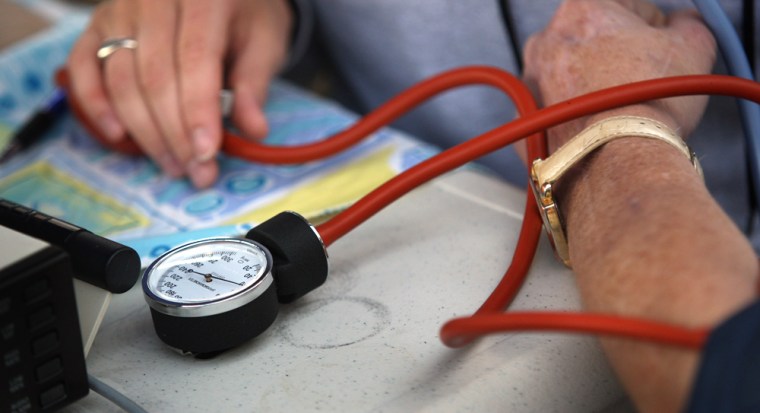The Census Bureau reports that the number of people lacking health insurance dropped by more than 1 million in 2007, the first annual decline since the Bush administration took office.
The nation's poverty rate held steady at 12.5 percent with 37.3 million people living in poverty in 2007. The median — or midpoint — household income rose slightly to $50,233. And the number of uninsured dropped to 45.7 million, down from 47 million in 2006.
The numbers represent a kind of scorecard on President Bush's stewardship of the economy at the kitchen-table level. However, they only go as far as the end of last year, before the current economic downturn started gathering force. Indeed, they could come to be seen as a snapshot taken at the high point of the administration's tenure.
The picture is mixed.
"The gains that occurred last year were welcome, but unfortunately, they are too little, too late," said Jared Bernstein, a senior economist with the liberal Economic Policy Institute in Washington. "The median household is no better off now than they were back in 2000, despite their deep contribution to the nation's economic growth during this period."
For example, after adjusting for inflation, last year's median household income of $50,233 was not significantly different from the figure for the year 2000, which was $50,557. "The American work force is baking a bigger economic pie, but the slices haven't grown at all," said Bernstein.
Uninsured numbers higher than in 2001
The welcome news on health insurance coverage was tempered by the fact that private coverage continued to erode. Government programs — such as Medicaid for the poor — picked up the slack, resulting in the overall reduction in people without health insurance. The uninsured rate also fell to 15.3 percent, down from 15.8 percent in 2006.
"A lot of the fall is due to the increase in public coverage," said David Johnson, who oversees the Census division that produced the statistics. The number of uninsured children also fell in 2007, after an increase in 2006 that had interrupted years of progress in getting more kids covered.
But seen over a longer period of time, the health insurance numbers are not reassuring. The number of uninsured — and the rate — are higher today than they were at the outset of the Bush administration in 2001. That year, 39.8 million people, or 14.1 percent, were uninsured.
Both the percentage and number of people without health insurance — either private or public — fell in 2007.
The Census Bureau said 15.3 percent of Americans had no health insurance in 2007, down from 15.8 percent in 2006, while the number of uninsured was 45.7 million, down from 47 million the previous year.
Key issue in presidential campaign
The number of Americans lacking health coverage has become a key issue in the U.S. presidential campaign, with Democratic candidate Barack Obama and Republican John McCain offering proposals to fix what both campaigns call a costly health care system that is failing to meet the needs of many people.
In 2007, 8.1 million children under age 18 went without health insurance, representing 11 percent of that group, down from 8.7 million and 11.7 percent in 2006.
Although holding steady overall, the poverty rate rose for children to 18 percent in 2007 from 17.4 percent in 2006. The threshold for poverty in 2007 was defined as annual income of $21,203 for a family of four, $16,530 for a family of three, $13,540 for a family of two and $10,590 for individuals.
Median household income edged up 1.3 percent between 2006 and 2007.
African Americans held the lowest median income, but for both blacks and Caucasians, median income rose between 2006 and 2007 for the first time since 1999. It remained unchanged for Asians, who earned the most, and Hispanics.
Last year, women made 78 cents to every dollar men earned, a penny more than before.
The gap between the rich and poor closed between 2006 and 2007, as the income of the top fifth fell.
The economy also has been hotly debated by the presidential hopefuls ahead of November's election, particularly with rising energy costs causing hardship for some Americans.
